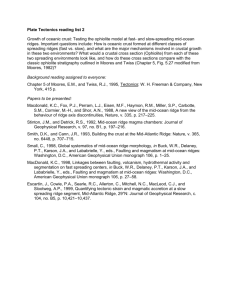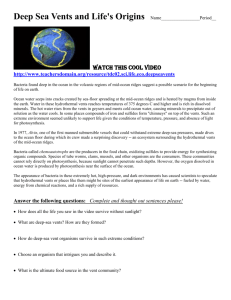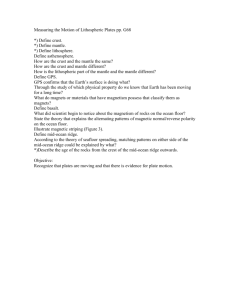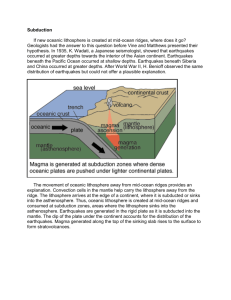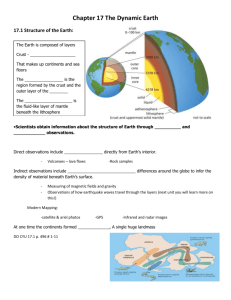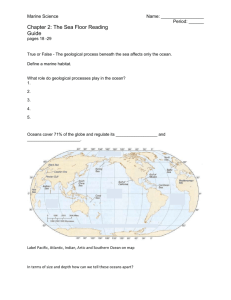Divergent margins
advertisement
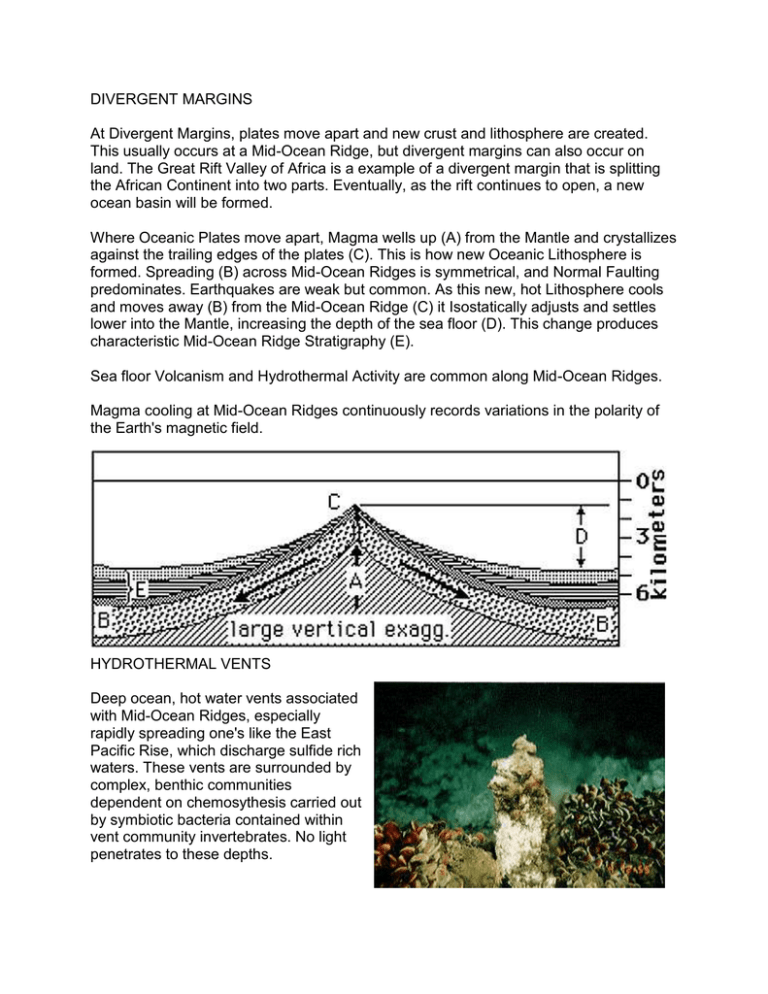
DIVERGENT MARGINS At Divergent Margins, plates move apart and new crust and lithosphere are created. This usually occurs at a Mid-Ocean Ridge, but divergent margins can also occur on land. The Great Rift Valley of Africa is a example of a divergent margin that is splitting the African Continent into two parts. Eventually, as the rift continues to open, a new ocean basin will be formed. Where Oceanic Plates move apart, Magma wells up (A) from the Mantle and crystallizes against the trailing edges of the plates (C). This is how new Oceanic Lithosphere is formed. Spreading (B) across Mid-Ocean Ridges is symmetrical, and Normal Faulting predominates. Earthquakes are weak but common. As this new, hot Lithosphere cools and moves away (B) from the Mid-Ocean Ridge (C) it Isostatically adjusts and settles lower into the Mantle, increasing the depth of the sea floor (D). This change produces characteristic Mid-Ocean Ridge Stratigraphy (E). Sea floor Volcanism and Hydrothermal Activity are common along Mid-Ocean Ridges. Magma cooling at Mid-Ocean Ridges continuously records variations in the polarity of the Earth's magnetic field. HYDROTHERMAL VENTS Deep ocean, hot water vents associated with Mid-Ocean Ridges, especially rapidly spreading one's like the East Pacific Rise, which discharge sulfide rich waters. These vents are surrounded by complex, benthic communities dependent on chemosythesis carried out by symbiotic bacteria contained within vent community invertebrates. No light penetrates to these depths.
